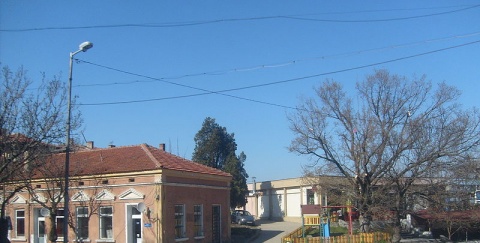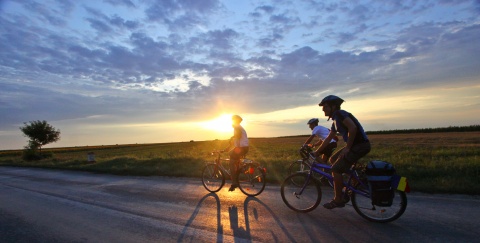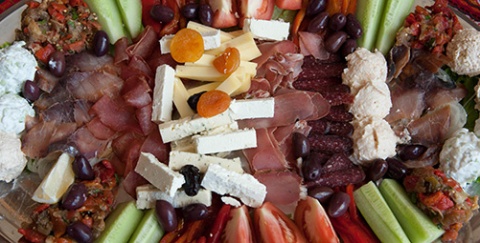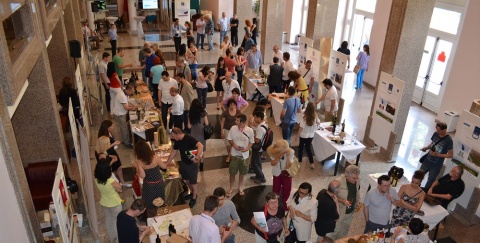_1920x492.png)
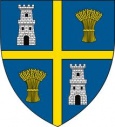
Olt County
Situated in the southern part of the country, downstream of Olt river, which gave the name of the county, Olt County is one of the counties situated along the Danube in Romania. The county is part of the old historic provinces Oltenia and Muntenia, being connected with Transylvania through Olt river...
Country: Romania
Olt County is characterized by two forms of relief, respectively The Getic Plateau in the northern part, which occupies one third of the surface and the Romanian Plain in the south, with two thirds. The Danube flows at the south margin of the county, being also a border with Bulgaria, over 47 km. The second important river, Olt river, flows on a north-south line over 100 km, representing a real axe of the territory.
The geographical and climate conditions favourised the practice of agriculture with fruit growing and wine growing, of beekeeping given the large forests of Strehareti, Seaca, Poboru, Teslui, Lunca Oltului, or sericulture the raw silk being used first in the medieval manufactures and then in the village economy.
The traditional folk culture of Olt County is impressive, both by the material and immaterial creations of the local people. Many archaeological sites and artefacts attest the existence of a stable population since middle and superior Paleolithic era. A well-known handicraft is the pottery, practiced since Neolithic Age. Nowadays there are 3 main pottery centers at Oboga, Romana and Corbeni, where glazed and unglazed ceramics is manufactured. Some earthenware are used nowadays for decorative purposes like the wedding jugs representing birds, animals and people, or the plates ornamented with the tree of life, traditional pattern specific to the pottery centers in Oltet Valley.
Sucidava Fortress
One of the biggest Roman-byzantine sites from the north of the Danube, the citadel Sucidava was an important economic and military center of the Geto-dacian tribe, sucii. After the Romans conquered Dacia, on the territory of the present commune Celei, a Roman castrum was built. Later on, in the 4th century Constantine the Great built a bridge over the Danube. Between 527-535 the citadel was restored by the Byzantine emperor, Iustinian.
Slatina – the county capital
The old center of the municipality of Slatina has a special architectural value, representing the historical patrimony of the municipality. There are 81 buildings from the period 1860-1938, which impress the visitors by the multitude of styles: classic, romantic, new Romanian, new gothic, modern and art nouveau. A special attraction is the Olt County Museum, founded in 1952, which possesses a rich patrimony with over 25.000 pieces, many of them being unique and belonging to the national cultural patrimony. The area covered is varied, the sections of the museum being structured into archeology, history, ethnography, arts and Slatina history and culture. Oltul Cultural Center is the institution in charge with the preservation of the folk traditions, customs and art of the county. It also manages the professional folk ensemble Plaiurile Oltului (the Lands of Olt), laureate of many national prizes and with many participations at international folk festivals.
An important part of the architectural patrimony of the county are the monasteries like Brancoveni Monastery (Brancoveni Commune), Clocociov Monastery (the southern part of Slatina) and Calui Monastery (Oboga Commune)
Festivals and events
- The Tree of Life, ethno- folkloric festival, Balş - May - with ceramics exhibition from Oboga, Româna, Vadastra, painted eggs, artisans, folk performances
- The Songs of the Danube - Ianca - May, contest for folk singers and musical instrument players from the Danube localities
- The Romanian Căluş national festival of groups of căluşari – Caracal – June. Căluşul is listed in the UNESCO immaterial patrimony list,
- The Bread Festival - Scorniceşti – July
- The Golden Corabia (Ship) – Corabia – September, national contest for folk and slow music
- From Drăgăneşti down the Valley, Drăgăneşti Olt – October – national contest of ballads and doina – traditional Romanian folk song listed in the UNESCO immaterial patrimony list,
The Olt people and the Rest of the World, national festival of humor, Slatina - October
DANUBE.TRAVEL has no control over the website content generated by users and/or visitors, neither such content represents a statement, opinion, recommendation or rating by DANUBE.TRAVEL. For further information please refer to DANUBE.TRAVEL – General Website Terms and Conditions of Use.
 EN
EN DE
DE

